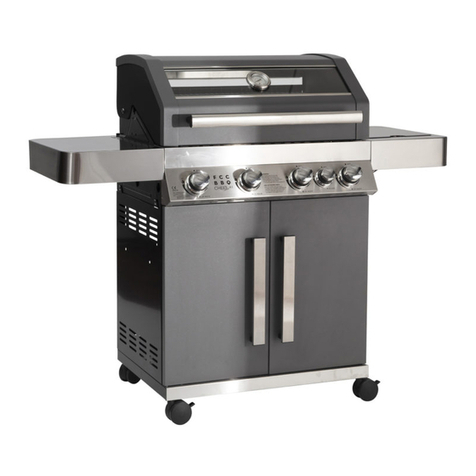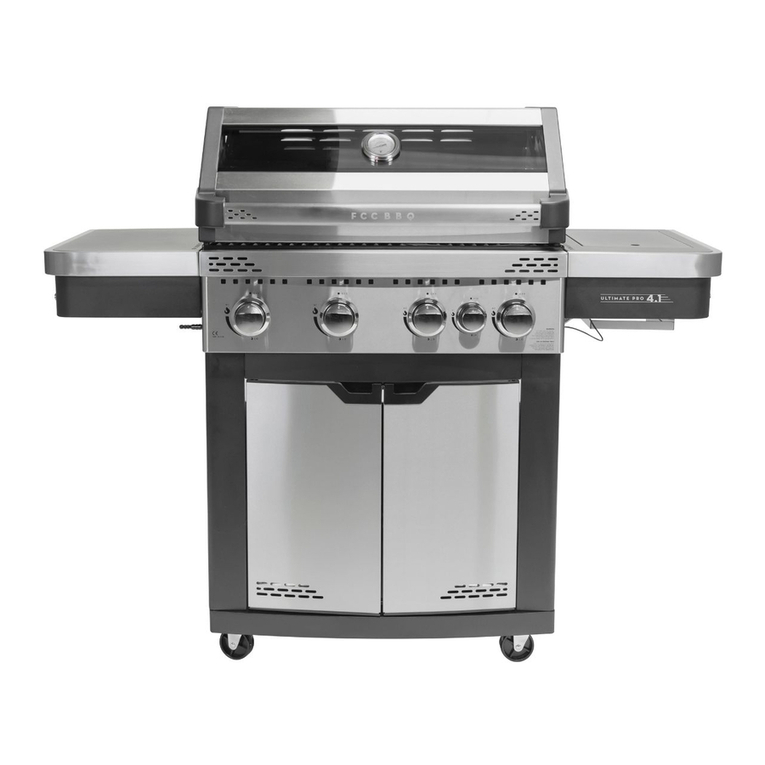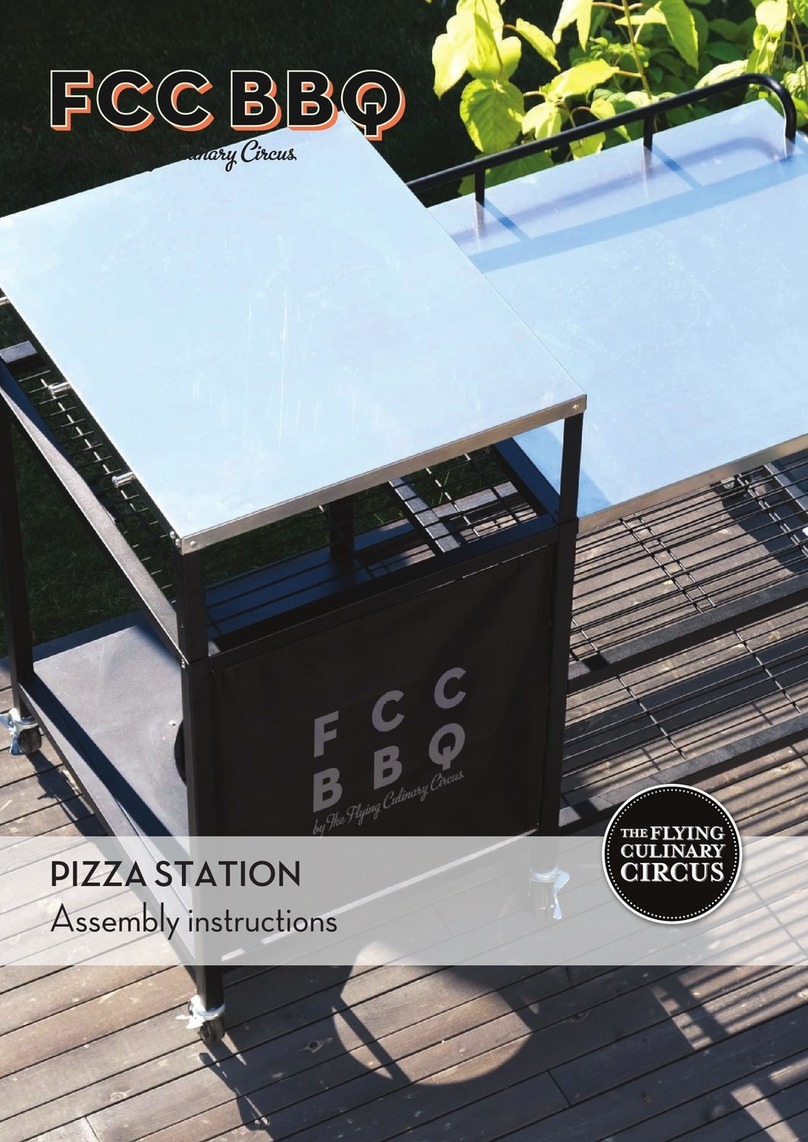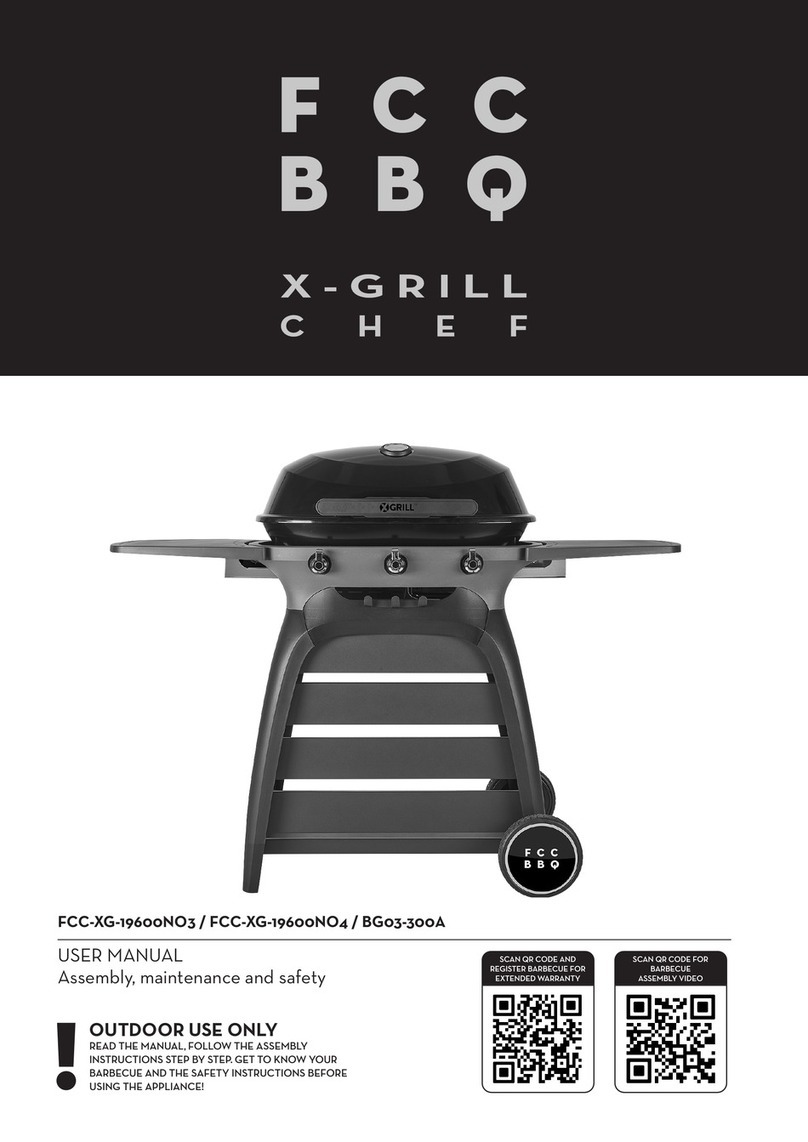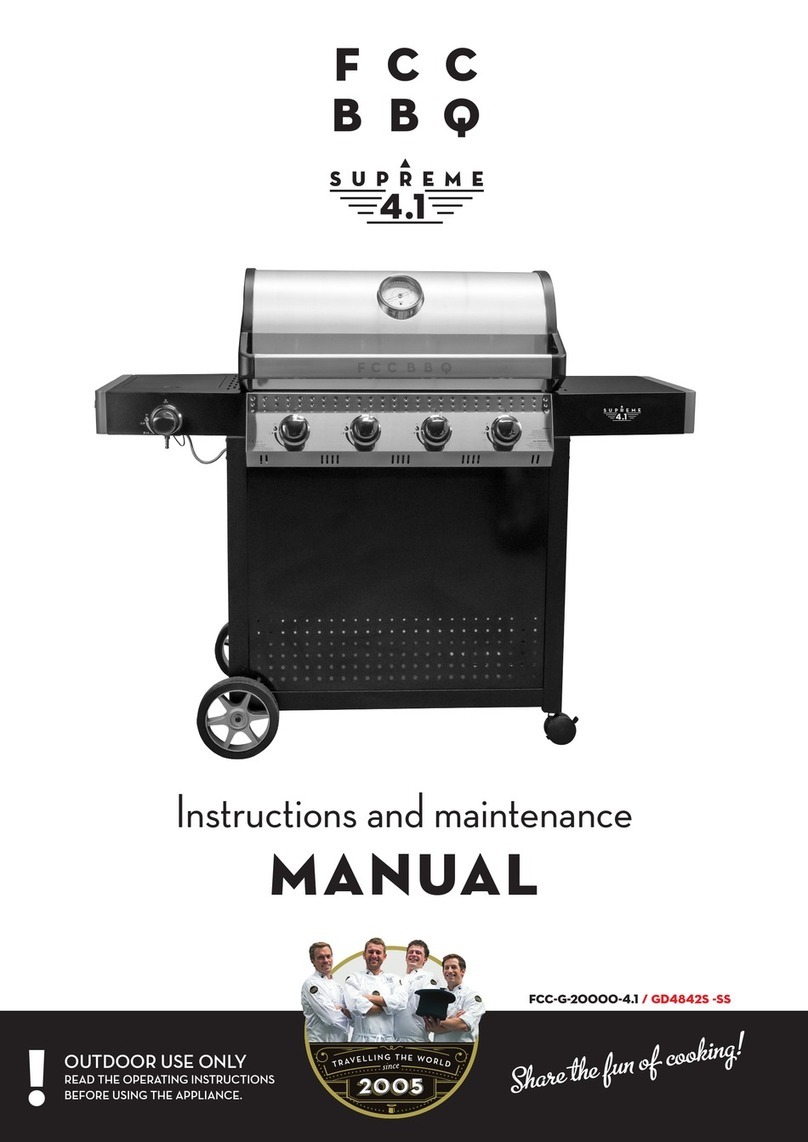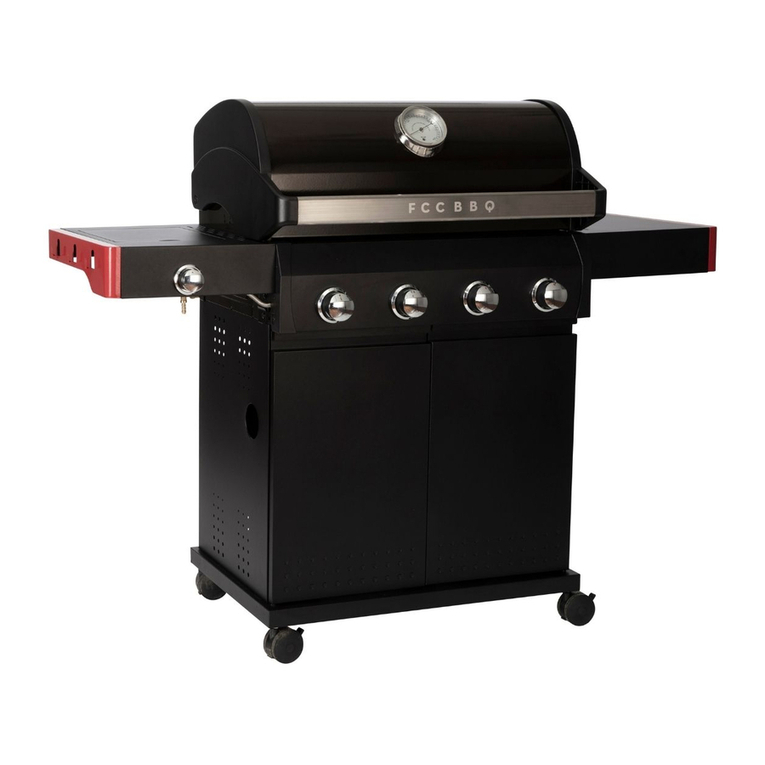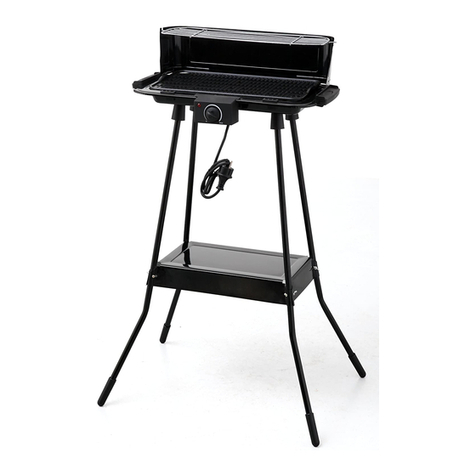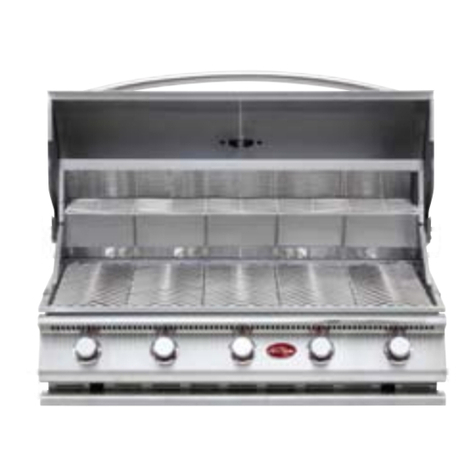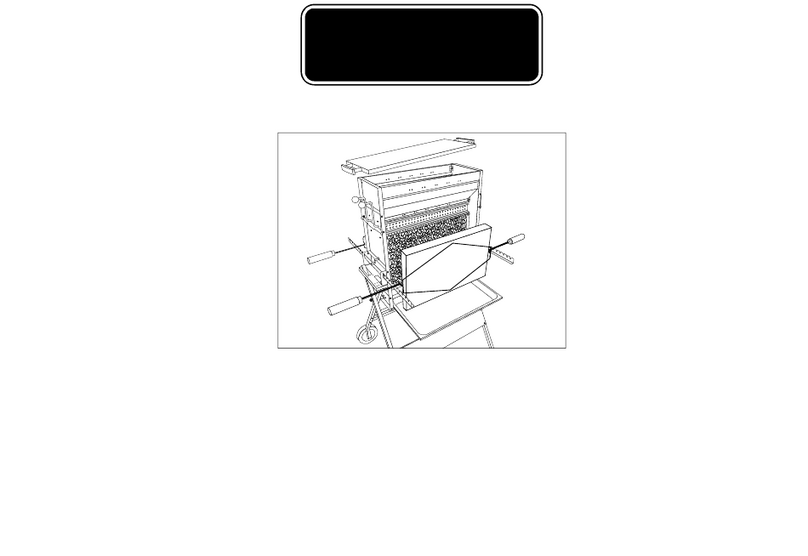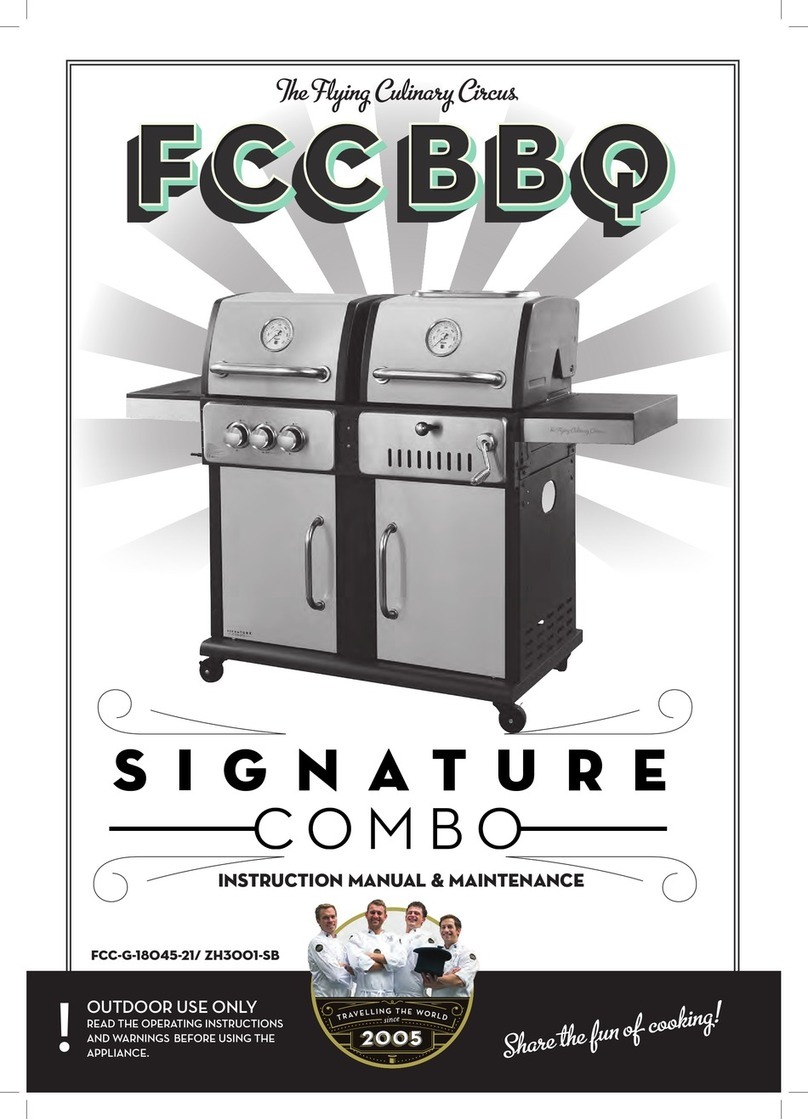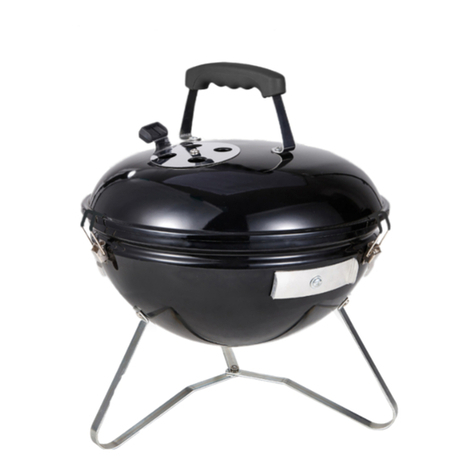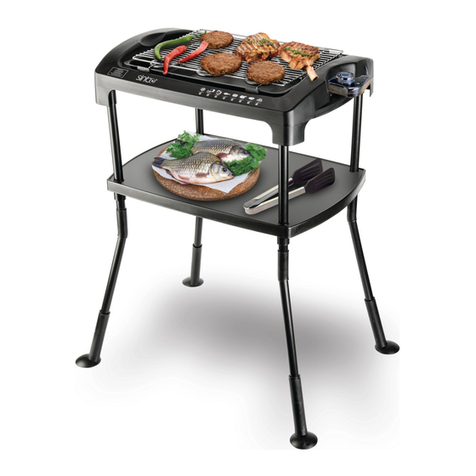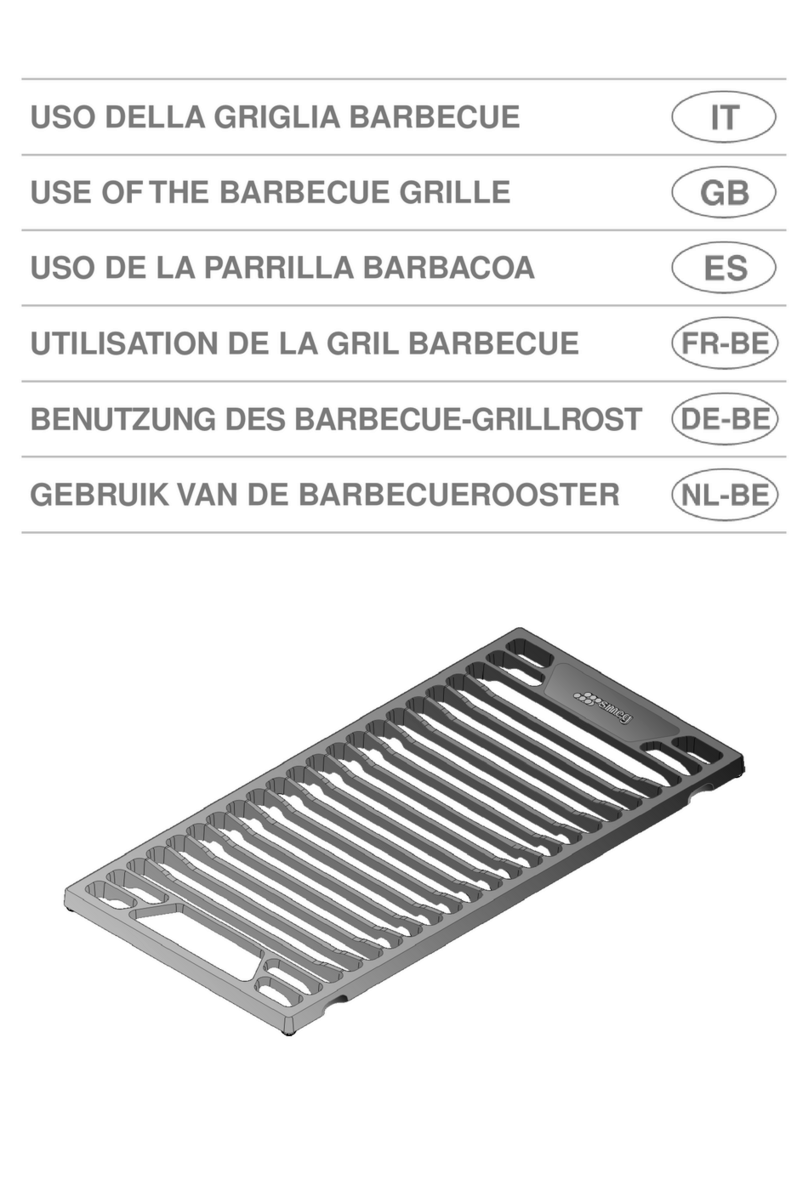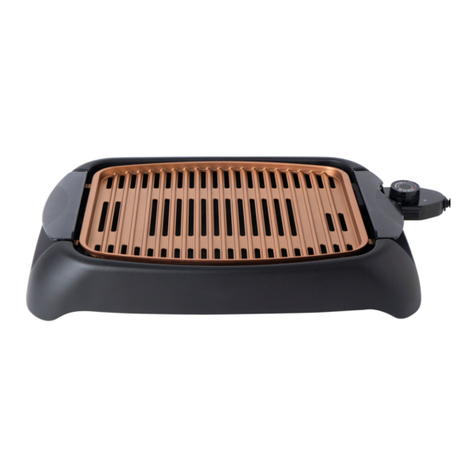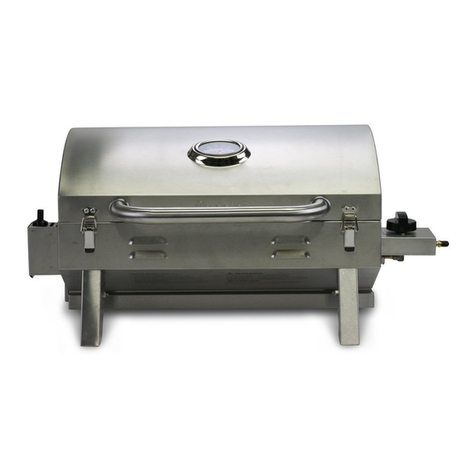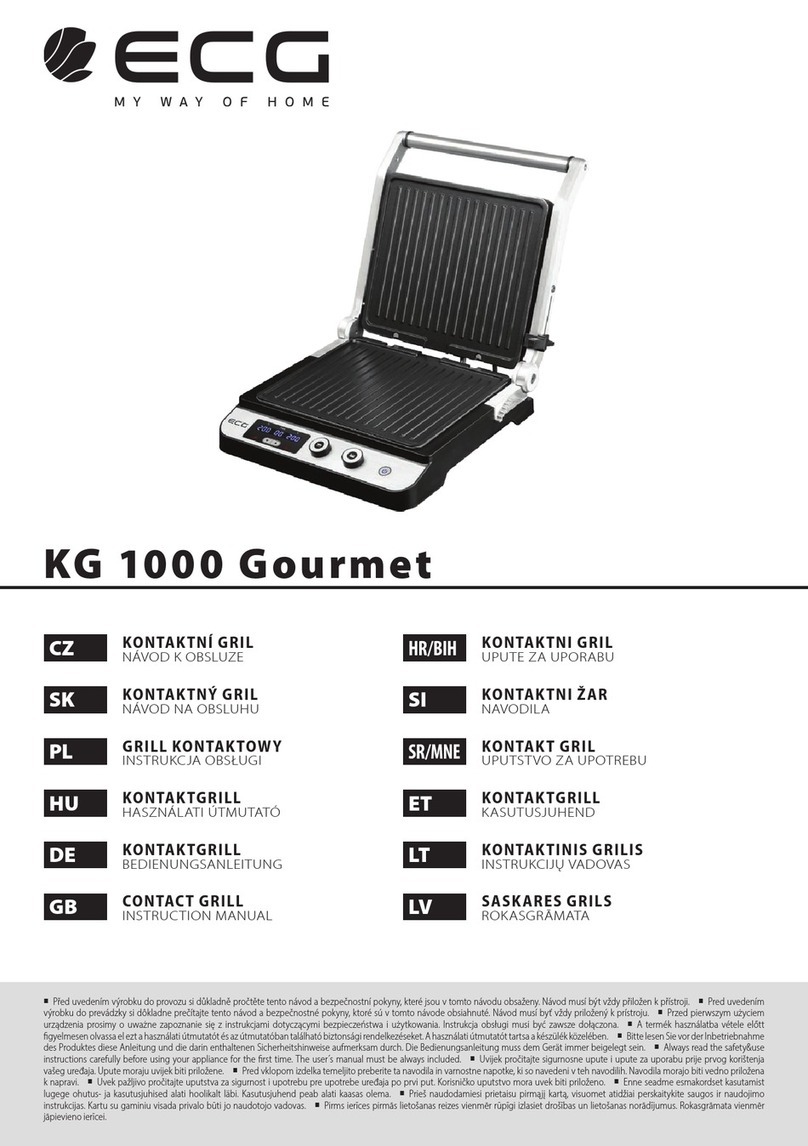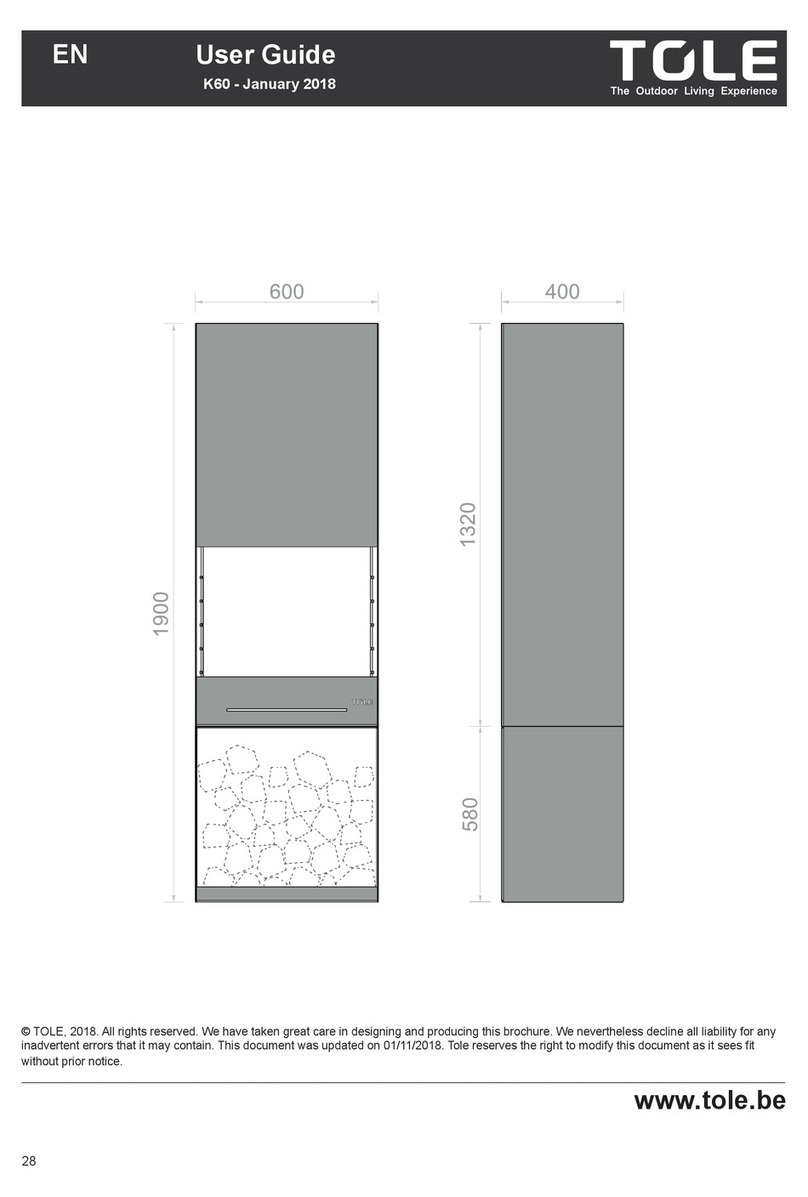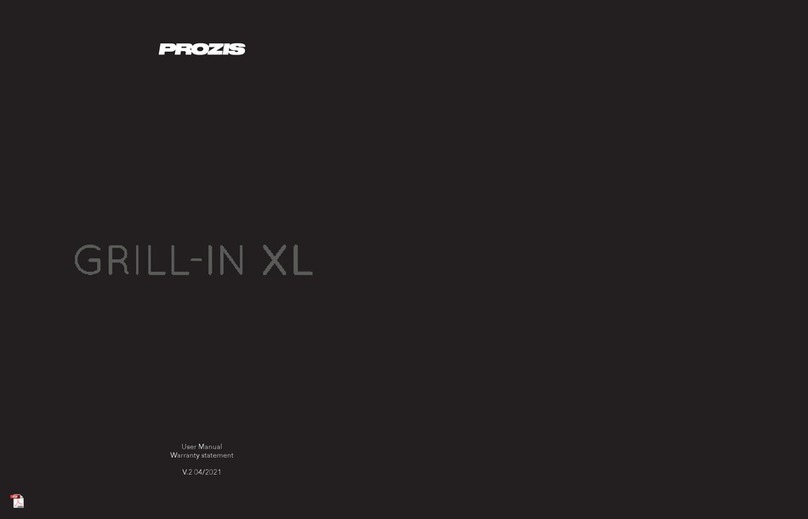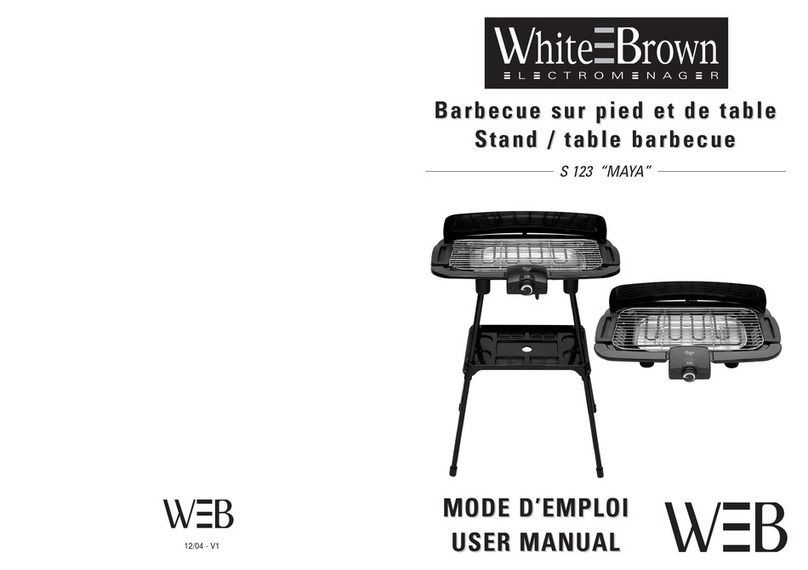
KEEP THE FIREBOX, FLAME TAMERS, COOKING GRATE
AND ACCESSORIES CLEAN TO AVOID GREASE FIRES.
IF A GREASE FIRE OCCUR
In case of grease fire, if possible close the gas
supply on the regulator / barbecue and
disconnectthe regulator. In the event of a minor
grease fire,wait until the fire goes out on its
own. In the eventof a major grease fire, use a
suitable extinguishing agent (CO2 appliance,
fire blanket, etc.) and tryto suffocate the fire.
NB! NEVER USE WATER TO EXTINGUISH A
GREASE FIRE.
HOW TO AVOID GREASE FIRE
Check the drip tray (13) grease cup (23 ) after
each grilling and clean regularly with a nylon
brush and dishwashing detergent. How often it
will be necessary to clean will depend on how
much and type of food is grilled. To simplify
cleaning we recommend adding cat litter and/or
aluminum foil on the drip tray.
Clean the grill grate after grilling with a grill
brush and, if necessary, with soap and water.
Clean flame tamers after grilling with a grill
brush and, if necessary, with soap and water.
In case of visible accumulation of grease and
food residue in the firebox, remove these with a
plastic scraper or using a nylon brush, water and
dish soap.
During preheating, check that there are no
signs of irregular flames. When grilling foods
with much fat or oil, pay extra attention. Feel
Maintenance
free to use trays in aluminum foil to prevent large
amounts from running down on flame tamers and
on the grease tray.
Do not leave the barbecue when it is lit and close
the gas supply as soon as possible if there is a
sign of a grease fire.
MAINTENANCE OF THE BARBECUE
•Check regularly that the burners are
burning correctly.
•Remove the grill grate and flame tamers
•Light the barbecue in the normal way.
•Turn the control from low to high. Check
if there is a difference in strength, and
that the flame is clear and blue. The flame
should not be orange.
If the burner behaves abnormally, read the
troubleshooting table.
•Remove grease and old food debris on the
burners with a nylon brush and check that
no holes in the burner are clogged.
MAINTENANCE OF THE BURNERS
1. All controls must be in OFF mode. Check
that the gas supply is switched off and the
regulator is disconnected from the gas
container.
2. Remove the cooking grate, flame tamers
and drip tray.
3. Remove the screws on the burner, use a
screwdriver.
4. Carefully lift the burners out of the valve
outlet.
5. Use a nylon brush to clean the outside of
the burner.
6. Clean blocked passages / channels by
using a metal string or e.g. bending a paper
clip.
7. Check that insects, cobwebs etc. do not
block the inside of the burner. In that case,
remove this.
8. Check if the burner is damaged. Small
holes and corrosion can occur with normal
use of the barbecue. Are there cracks or
holes, the burner should be replaced with
a new one.
9. After cleaning, place the burner in place
and screw it on.
10. Replace flame tamers, grease trays and grill
grate.trays and grill grate.
!NB: DO NOT USE WATER TO
EXTINGUISH GREASE FIRE!
CLEAN THE BARBECUE REGULARLY
TO AVOID GREASE FIRES.
CLEANING
All cleaning and maintenance must be
performed when the barbecue is cold. Make
sure that the gas upply is switched OFF and
the regulator is disconnected from the gas
container.
Use a mixture of dishwashing detergent and
water, or use a separate grill cleaner with
a nylon scrubbing brush / scouring sponge
on the inside of the lid and in the inner grill
body itself. Rinse well and allow to air dry
completely. Do not use caustic soda, alcoholic
or abrasive detergents. This can damage the
barbecue and cause a fire. Cast iron cooking
grate, drip tray and grease cup must not be
cleaned in a dishwasher.
PLASTIC PARTS
Use only clean water and any mild detergents.
Wipe with a clean cloth.
COATED AND STAINLESS STEEL PARTS
Inadequate maintenance/cleaning may
cause the base, front panel, side table, and
other coated or stainless steel parts of the
barbecue to begin rusting. To maintain the
barbecue’s great appearance and surface,
it must be regularly cleaned using gentle
cleaning agents and warm water to remove
salt, grease and other residue that can harm
the surface. After washing, dry the surface off
with a soft cloth. Make sure the barbecue is
completely dry before putting a cover over it.
Coated surfaces must be treated with a
polishing agent (e.g., car polish) and stainless
steel parts must be treated with a thin layer
of acid-free oil one to two times per year.
For barbecues kept in coastal areas, we
recommend performing treatment more
often to prevent salt carried by wind/rain
from causing the surface of the metal to rust.
Surface rust can be removed by cleaning the
surface and applying a polishing agent. Please
note that the warranty only covers rust
perforation.
COOKING GRATE OG FLAME TAMERS
Grill grate and flame tamers are brushed
regularly with a grill brush for rough cleaning.
The grill grate can be soaked in mild soapy
water. For difficult, burnt stains, use a non-
abrasive cleaner. Rinse well with water and
dry well.
NB! The barbecue grates must be completely
dry before they are placed back in the
barnecue. For main cleaning before storing
the barbecue for a longer period, feel free
to insert the grill grates with a thin layer of
cooking oil.
INSECTS AND VERMIN
After long-term storage, insects and other
vermin can be found in the barbecue. If you
experience problems with lighting or irregular
flames, it can be due to unwanted guests
blocking the gas supply. In such instances,
dismantle and clean the burners. Replace the
burnerswhen they are dry.
•Disassemble the burners and clean them if
pests are suspected in the barbecue. Refit
the burners when they are completely dry.
•Check that the gas hose is not cracked or
damaged by mice or rats.
FIRES CAUSED BY FAT, DAMAGE
THE METAL, PAINT AND ENAMEL.
DAMAGE TO THE BARBECUE
CAUSED BY FAT BURNING, IS NOT
COVERED BY THE GUARANTEE
AS IT IS DUE TO INCORRECT USE.
!
Maintenance
To see how to clean your
barbecue, watch our cleaning video:
https://www.youtube.com/watch?
v=sC-KW5siUT0&t=1s
SCAN QR CODE FOR
BARBECUE
CLEANING VIDEO
2120 fccbbq.com

















